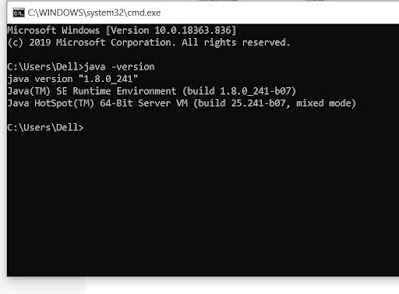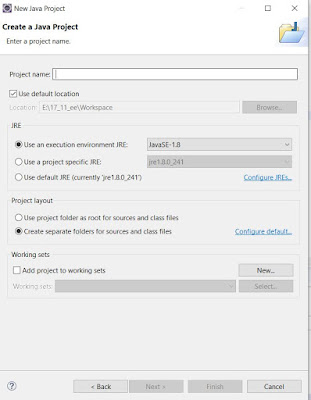How to Start Automation using Selenium with the help of Eclipse | IDE for JAVA | Installation of Selenium
Hello Everyone! Welcome back to MODTECHSTUFF.
In this blog, we will talk about how to start automation testing using Selenium, how to install Selenium and Eclipse IDE!
What is Selenium?
Selenium is an open-source automated testing tool used to automate web applications. You can utilize various programming languages like Ruby, Java, NodeJS, PHP, Perl, C#, Python, and so on to make Selenium Test Scripts. Testing done utilizing the Selenium tool is generally term as Selenium Testing.
Selenium Software isn't only a single tool however a set-up of different software, each piece taking into account distinctive testing needs of an association. To begin with Selenium's most recent adaptation (WebDriver-based usage), you'll just need a single selenium JAR file (selenium-independent server-'{'version'}'.jar) to run tests both locally and on remote systems.
Brief History of Selenium:
Selenium was developed by Jason Huggins in 2004. An architect at ThoughtWorks, he was taking a shot at a web application that necessary successive testing. Having understood that the tedious Manual Testing of their application was turning out to be increasingly wasteful, he made a JavaScript program that would consequently control the program's activities. He named this program JavaScriptTestRunner.
The Selenium name originated from a simple joke in which Jason broke one an opportunity to his group. Another automated testing structure was mainstream during Selenium's turn of events, and it was by the organization called Mercury Interactive (indeed, the organization that initially made QTP before it was procured by HP).
Components of Selenium Suite:
- Selenium (IDE)
- Selenium Remote Control (RC)
- Selenium WebDriver
- Selenium Grid
Selenium IDE:
Selenium Integrated Development Environment (IDE) is the most simple system in the Selenium suite and is the least demanding one to learn in the present scenario. Due to its simplicity, the Selenium IDE should just be utilized for only a prototyping tool. If you further develop advanced test cases, you should employ either Selenium RC or WebDriver.
Selenium RC:
Selenium RC was the lead testing system of the entire Selenium venture for quite a while. This is the primary automated web testing device that permitted clients to utilize a programming language they like. As of form 2.25.0, you can use Java, Ruby, Python, C#, Pearl in Selenium RC.
Selenium WebDriver:
The Selenium WebDriver demonstrates itself to be better than both Selenium IDE and Selenium RC in numerous perspectives. It actualizes a progressively current and stable methodology in the automation of the browser activities. WebDriver, not at all like Selenium RC, doesn't depend on JavaScript for Automation. It controls the browser by legitimately communicating with it. Selenium RC is compatible with Java, Ruby, Python, C#, Pearl.
Selenium Grid:
Selenium Grid is a tool utilized along with Selenium RC to run equal tests across various machines and various browsers simultaneously. Equal execution implies running different tests immediately.
Allows concurrent running of tests in numerous browsers and environments.
Save time effectively. Uses the nodes and-hubs approach. The hub works as a central source of Selenium command to every node associated with it.
Which Selenium YOU need?
1. Selenium IDE:
To find out about approaches on automated testing and Selenium, including:
Selenese commands, for example, type, open, clickAndWait, attest, confirm, and much more. Locators, for example, id, name, xpath, css selector. Executing customized JavaScript code utilizing runScript To develop tests with no earlier practical knowledge in programming. To make simple test cases and test suites that you can send out later to RC or WebDriver.
2. Selenium RC:
To structure a test utilizing a more expressive language than Selenese
To run your test against various programs (with the exception of HtmlUnit) on various working frameworks.
To send your tests over numerous situations utilizing Selenium Grid, the application against another program that underpins JavaScript and web applications with complex AJAX-based situations.
3. Selenium WebDriver:
To utilize a specific programming language in structuring your test cases. To test applications that are using more AJAX-based functionalities.
To execute tests on the HtmlUnit program.
4.Selenium Grid:
To run your Selenium RC contents in numerous test cases and working frameworks in parallel. To run a large number of the test suite, that can be finished as soon as possible.
Why do I need Selenium Automation Testing?
Let us suppose you are a manual tester who has this situation: Checking whether the Facebook sign up page approves input strings and registers a customer effectively in most recent versions of Chrome and Safari.
Accept that the sign-up page has these info fields—username, email address, and password. The tester will get a Windows 10 And Mac OS and follow these means, successively, on most recent variants of Chrome and Safar.
Enter the URL in the location bar (www.facebook.com/signup)
Enter an invalid string in each info field (email, username, and password)
Check whether the information was approved against comparing regexes and data in the database
Enter 'valid' strings in each information field; click Sign Up
Check whether "Welcome to Facebook, '{'username'}'" page appeared
Check whether the framework database made another userID for '{'username'}'
Depending upon the number of manual testers it might take a few hours to weeks to be certain that the web application is completely Tested.
Present-day engineers don't have that sort of time to allow for testing, however, they can't put aside comprehensive testing in a rush to discharge either. This is the reason Selenium comes under the picture.
With the help of Selenium Automation Testing, we can reduce labour time and get more accurate results in no time.
How to Install Selenium:
We can install Selenium in just three steps. The first step is installing JAVA SDK, the second step is installing the Eclipse IDE and finally some Selenium Driver Files.
Step.1 Installing JAVA on your System:
You can download and install JAVA Software Development Kit(SDK) JDK here
After clicking on JDK download, you have to choose Your Operating System
as shown below
This JDK version comes with an inbuilt Java Runtime Environment (JRE), so the advantage of JDK you do not need to download and install the JRE additionally.
Next step is
- Go to Start and search for ‘System’
- Click on ‘System’
- Click on ‘Advanced system settings’
- Click on ‘Environment Variables’ under the ‘Advanced’ tab as shown below:
- Under ‘Variable value’, at the end of the line, enter the following path – %JAVA_HOME%bin;
- Now, you can click ‘OK’ and you are done.
Once the installation is finished, open command prompt and type " java-version". If you see the following screen, then Congratulations you successfully installed JAVA on your System.
Step.2 Installing Eclipse IDE
Download the latest version of Eclipse IDE here
After downloading you will get a zip file, unzip it and install. Launch the Eclipse after a successful installation. When you launch eclipse IDE a popup window will open and asked to select for a workspace, just accept the default location.
The next step is to create a new project through the File > New > Java Project. Name the project as a "new project".
A new pop-up window will open enter details
- Project Name
- Location to save the project
- Select an execution JRE
- Select layout project option
- Click on Finish button
Step.3 Download Selenium jar File:
Download the Selenium jar file here
Extract the zip file and save it in your selenium folder. Next, you have to download Chrome Driver for Google Chrome and Gecko Driver if you are using Mozilla Firefox. In the same downloads page, scroll further down and you will find third-party drivers section.
To download driver click here
now next steps are
- Right-click on "new project" and select Properties.
- On the Properties dialog, click on "Java Build Path".
- Click on the Libraries tab, and then
- Click on "Add External JARs.."
If you have any query feel free to ask me. I am very ready to help you ( FREE)













Comments
Post a Comment